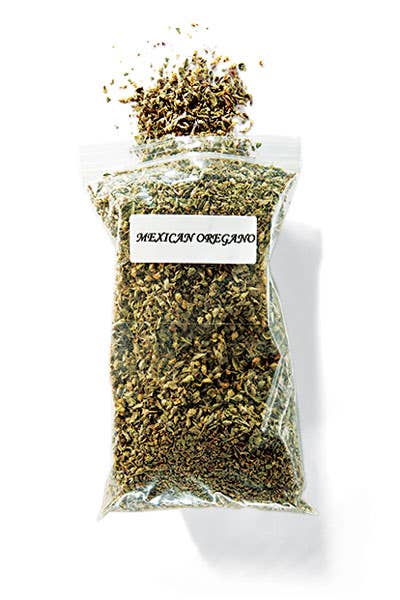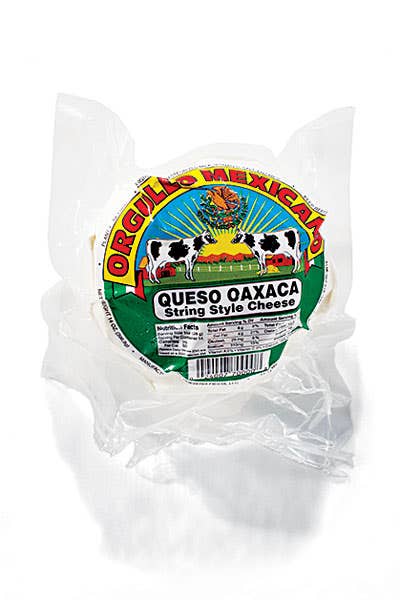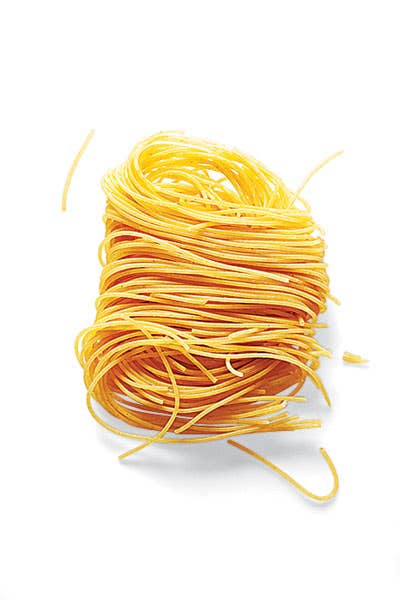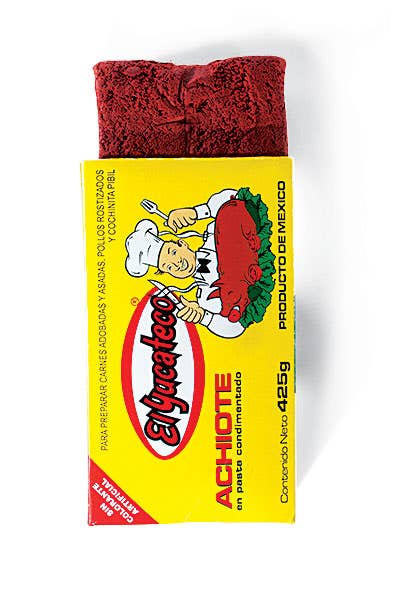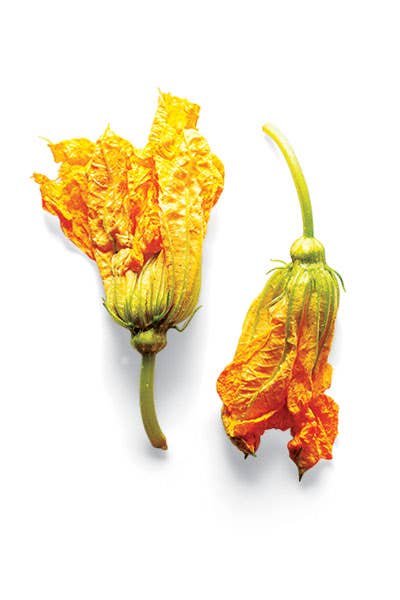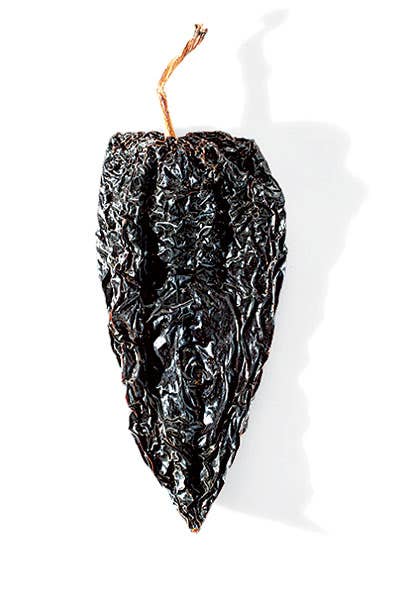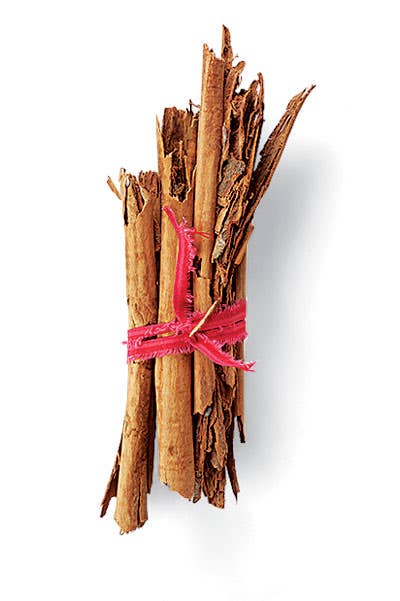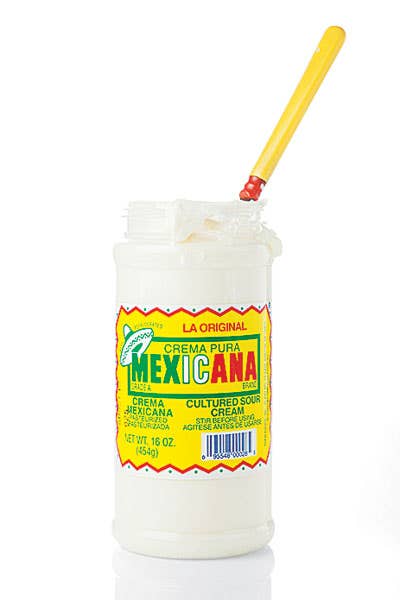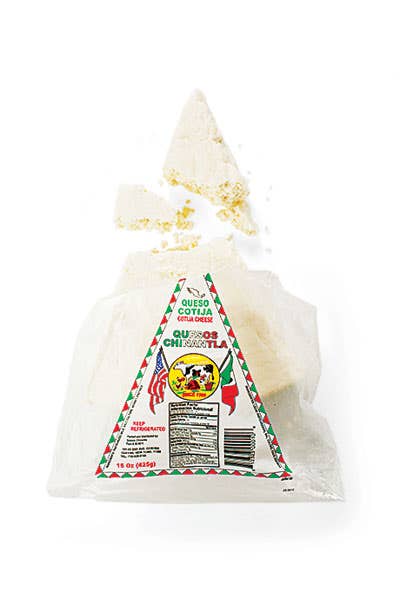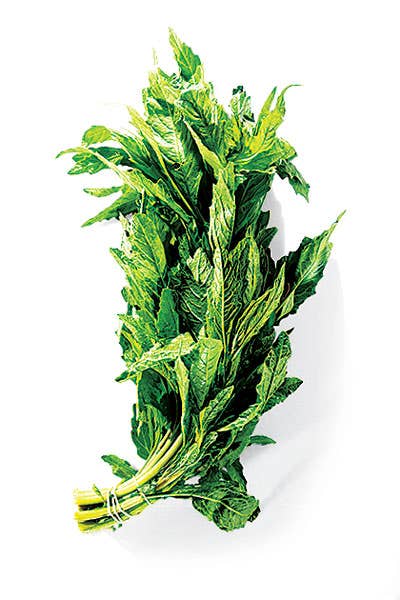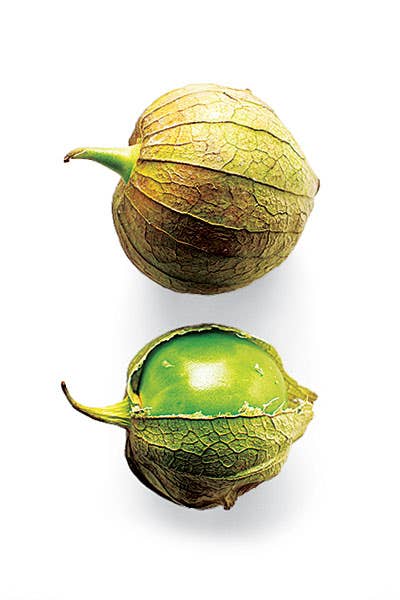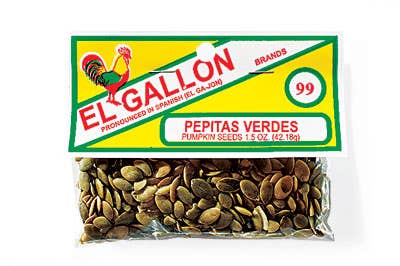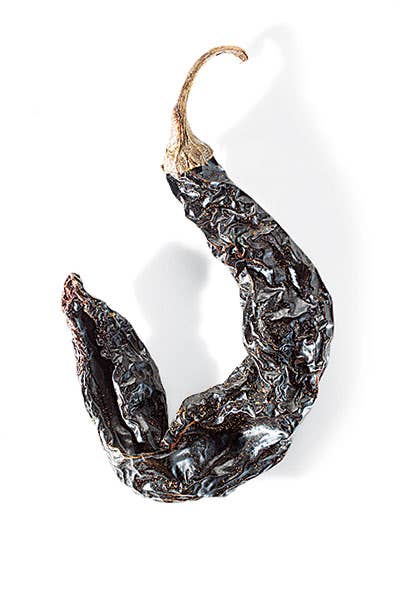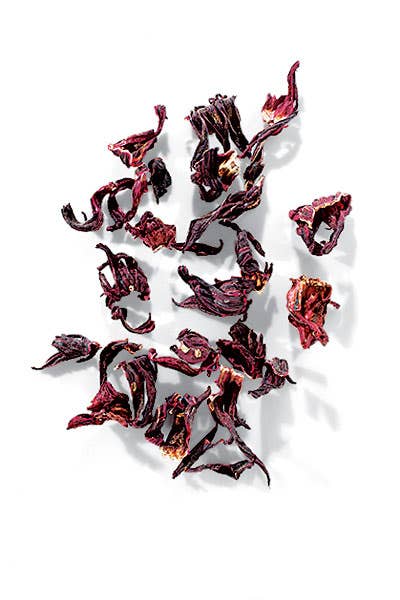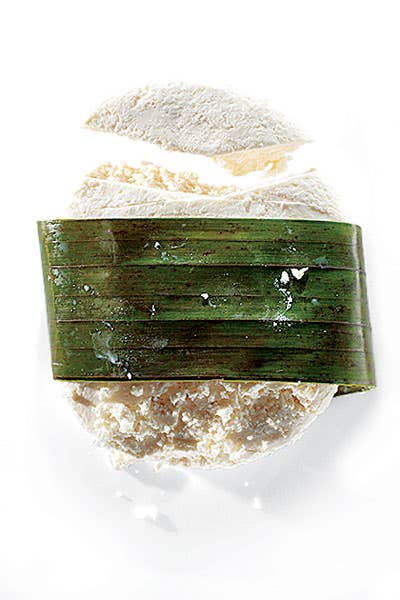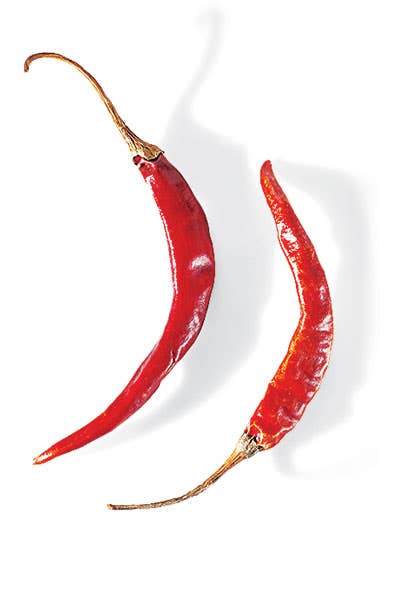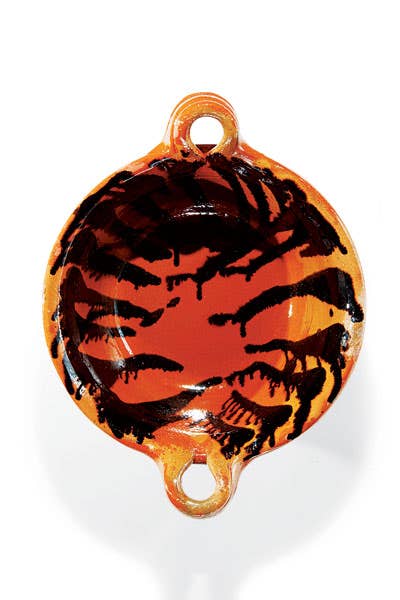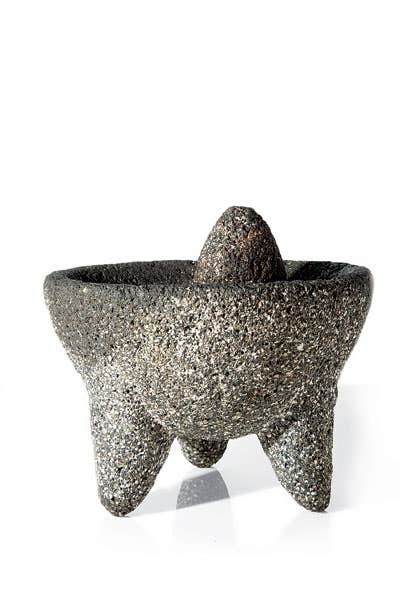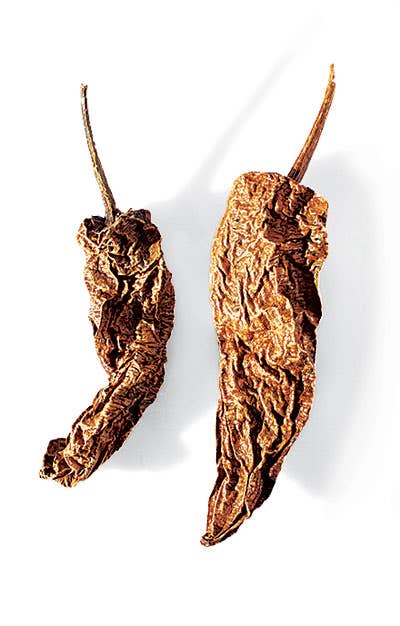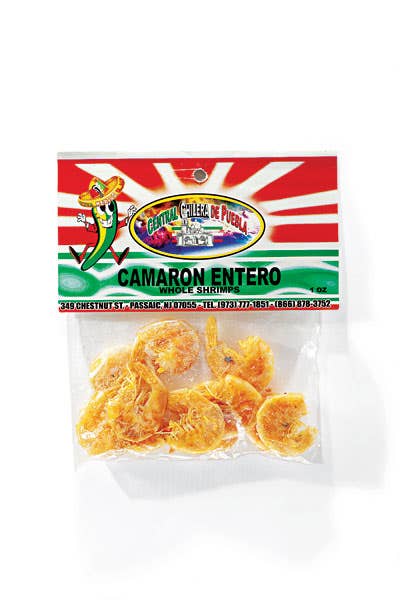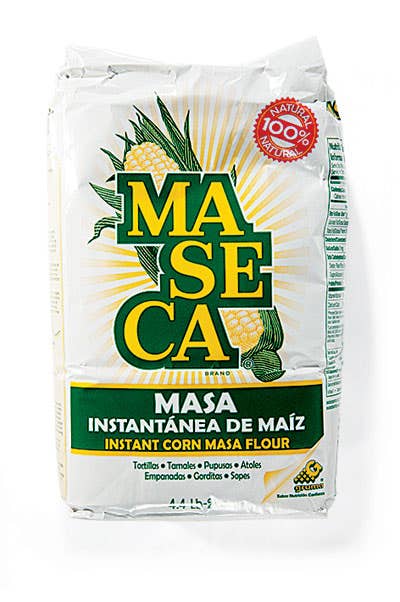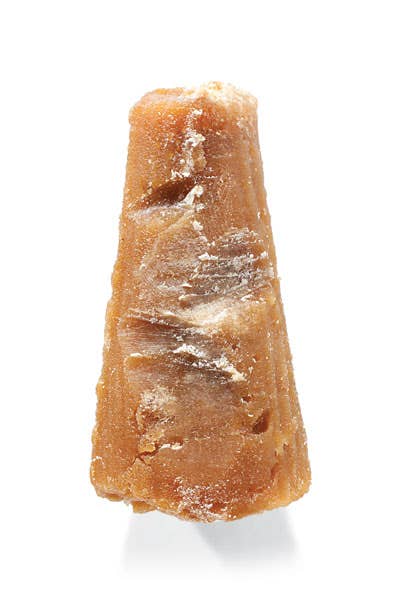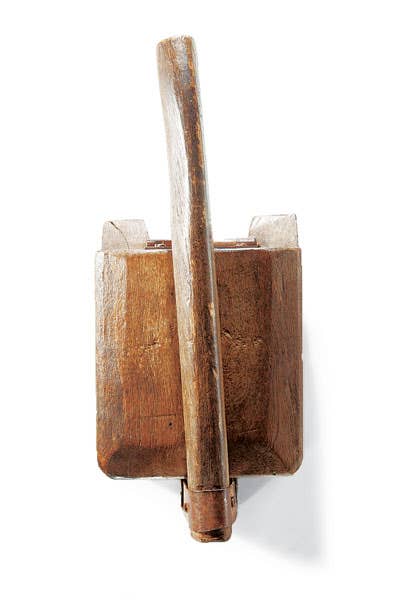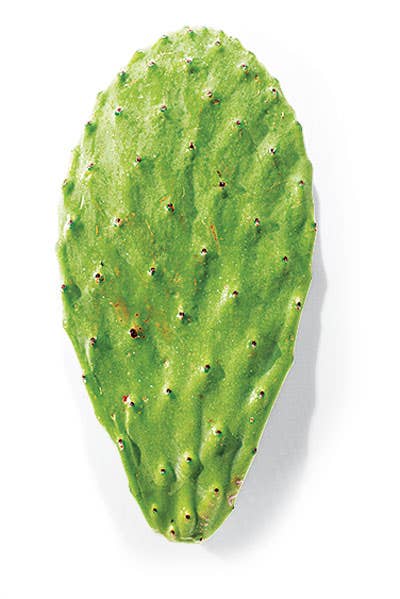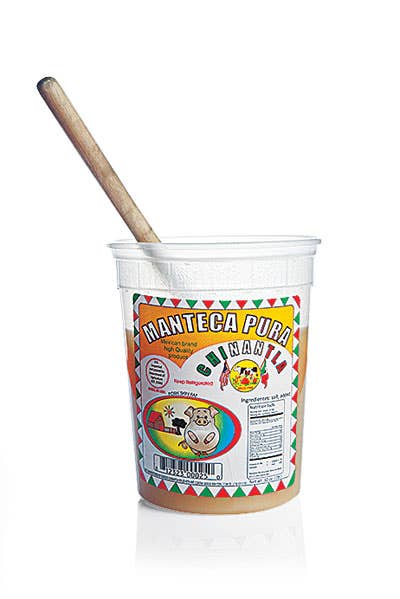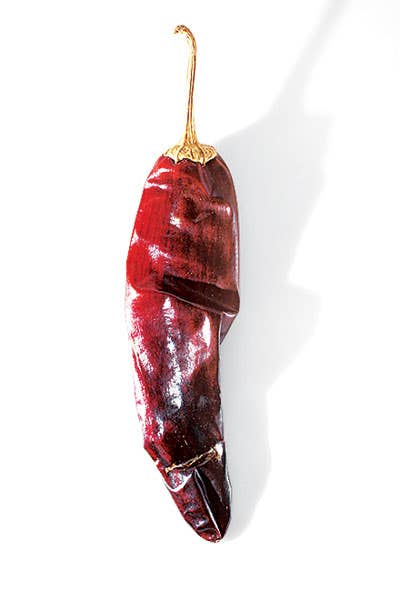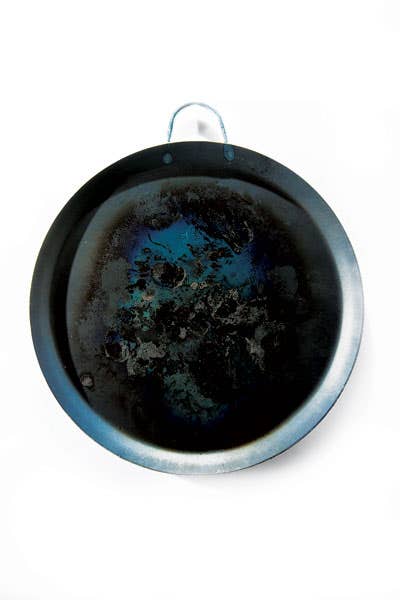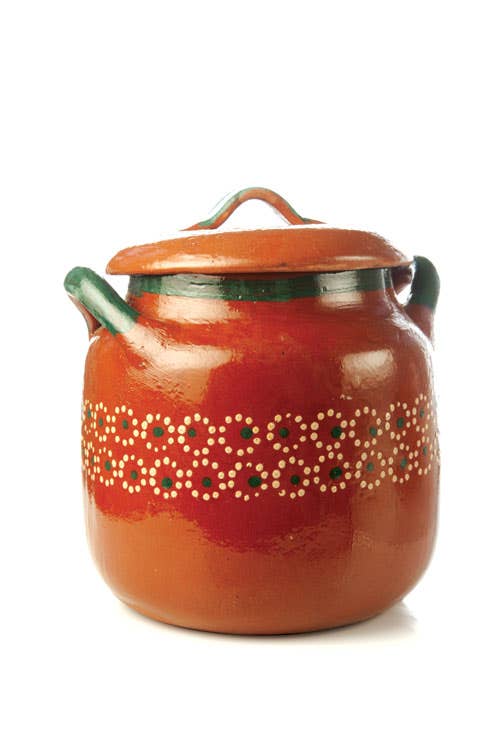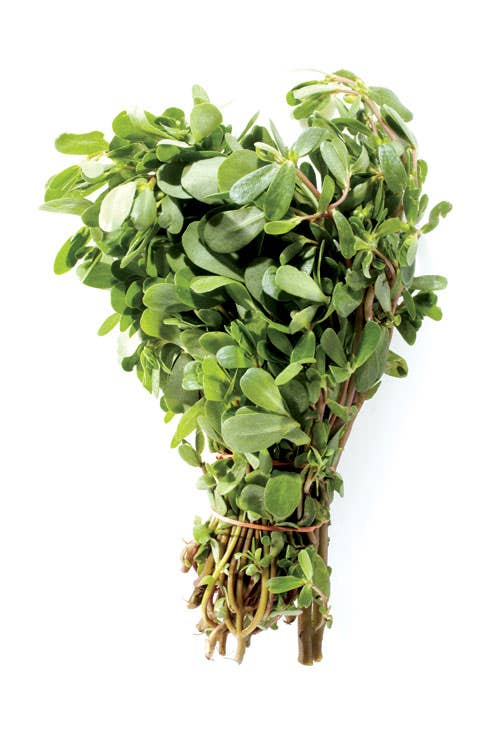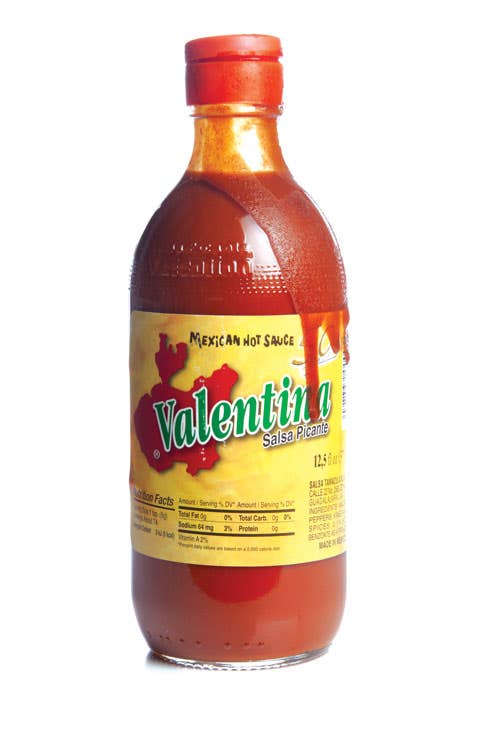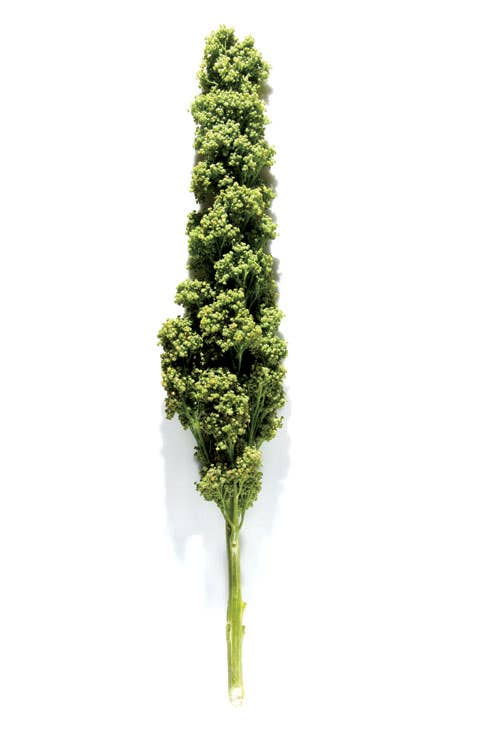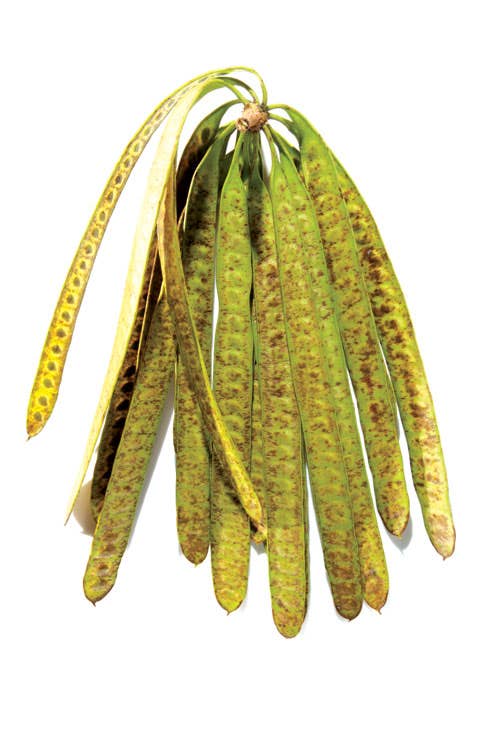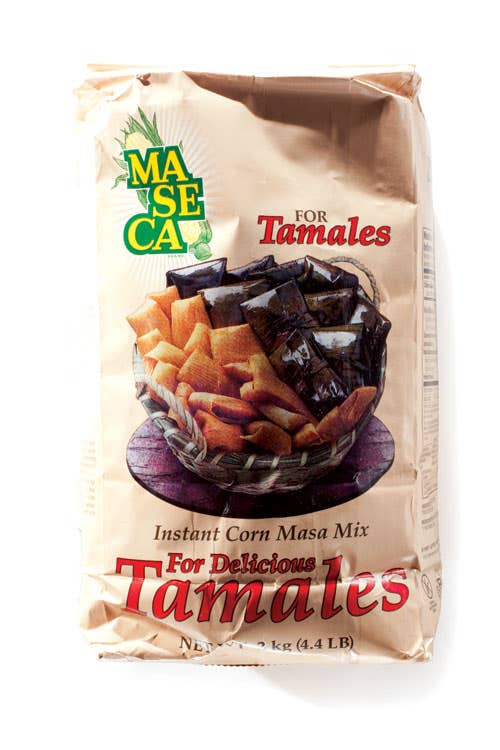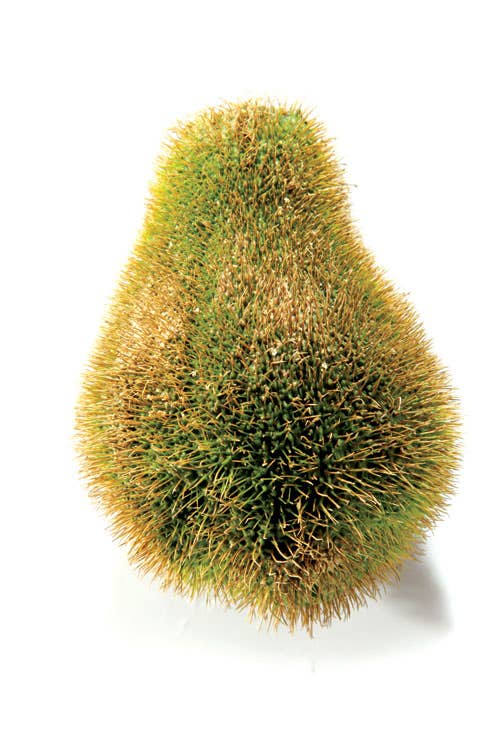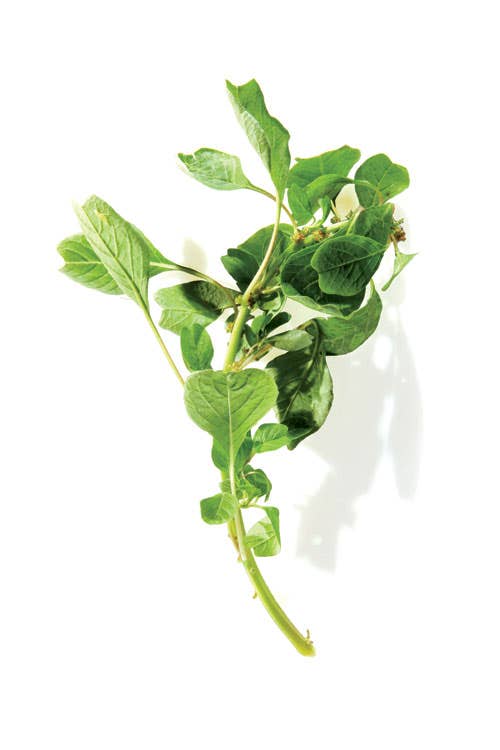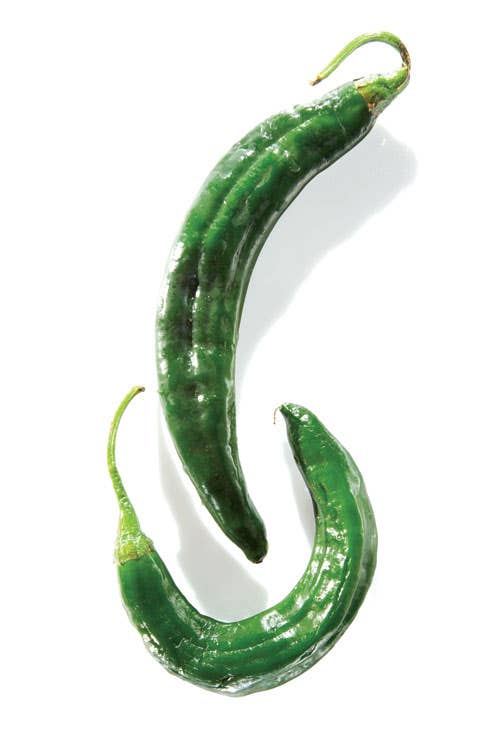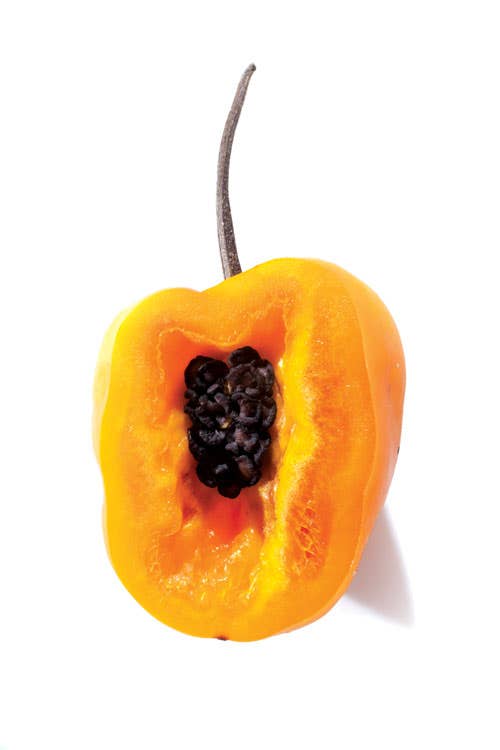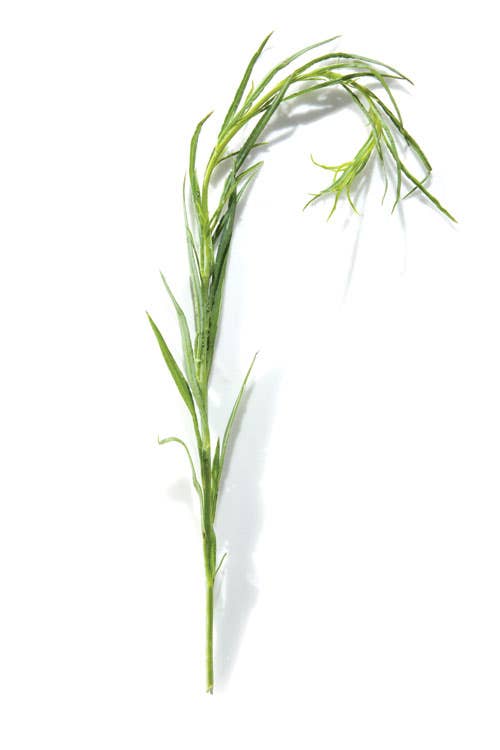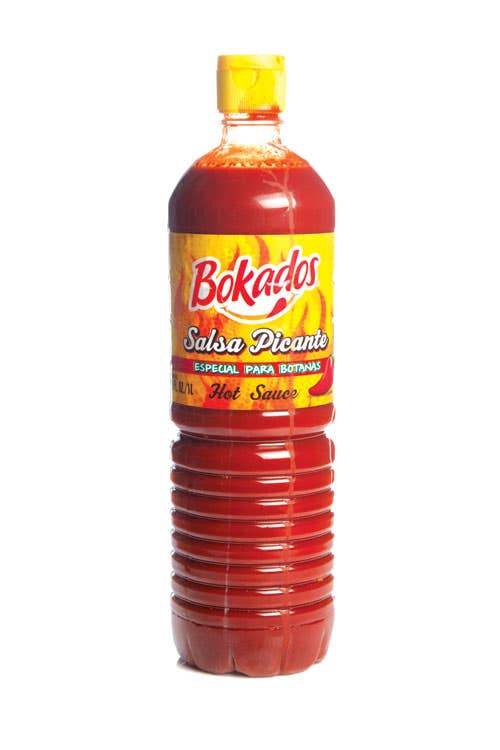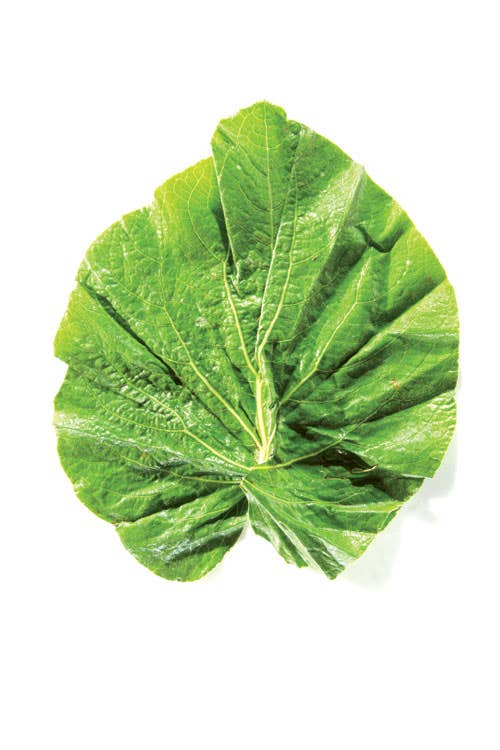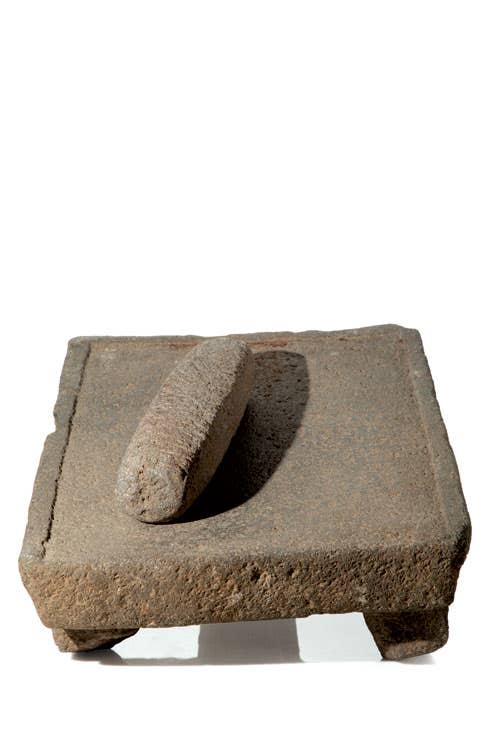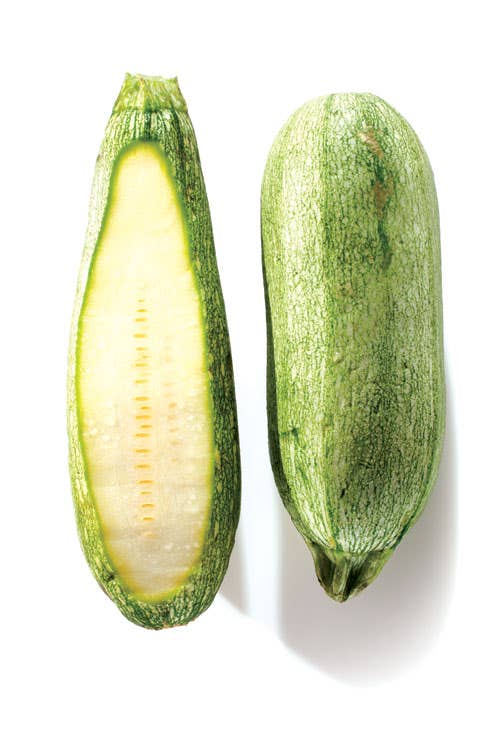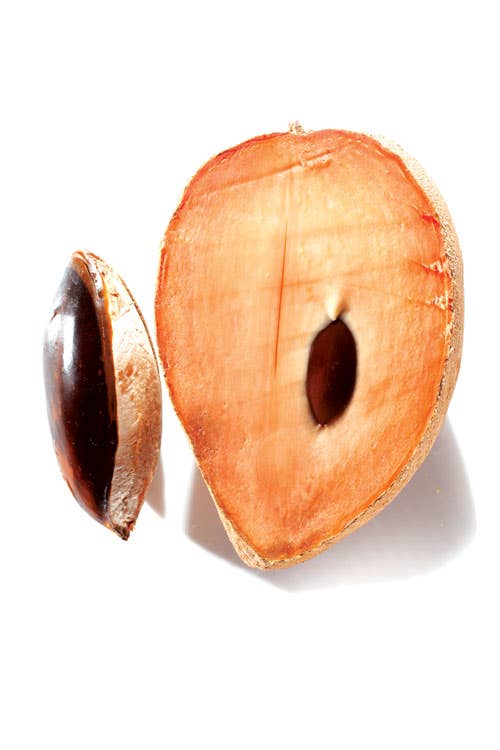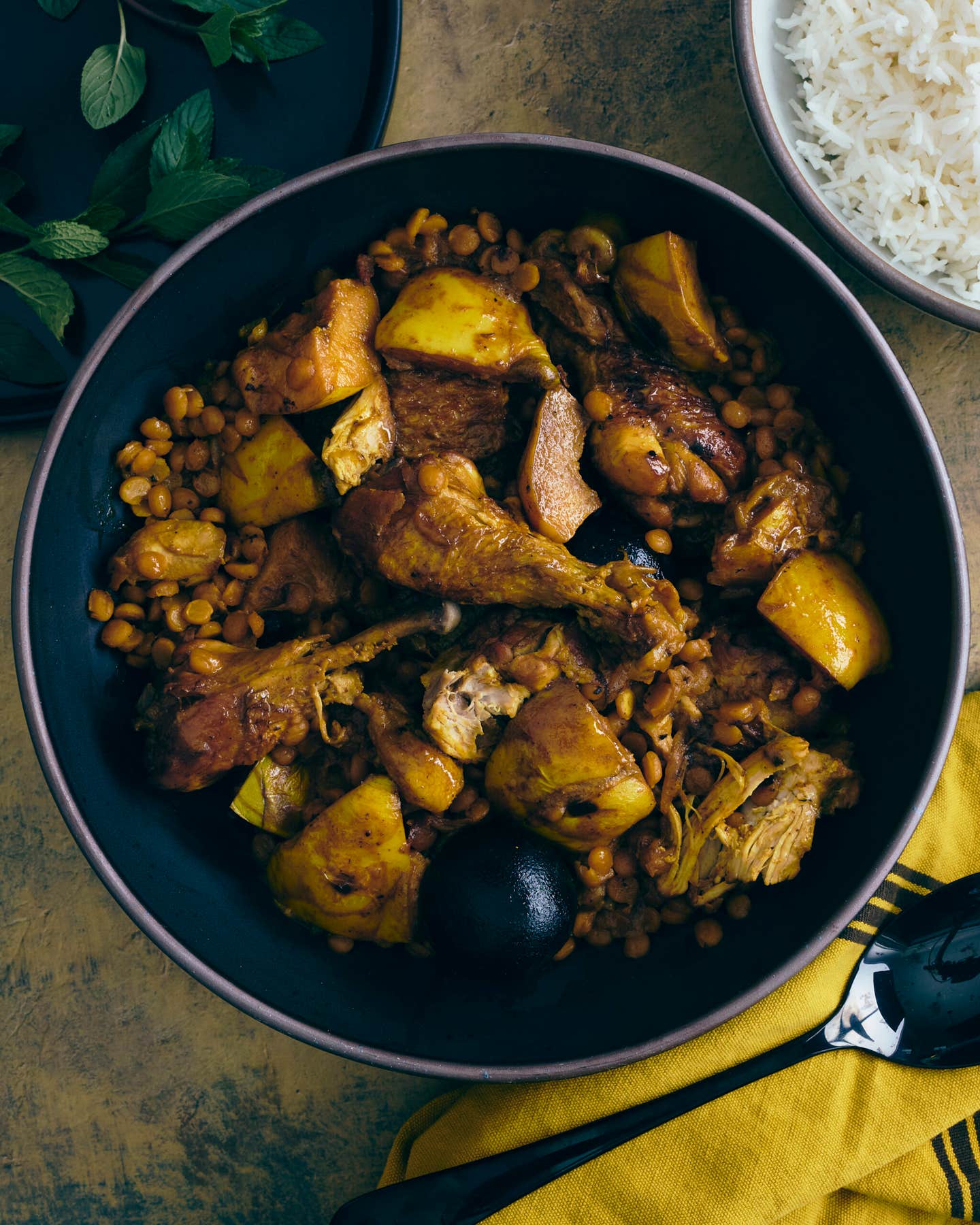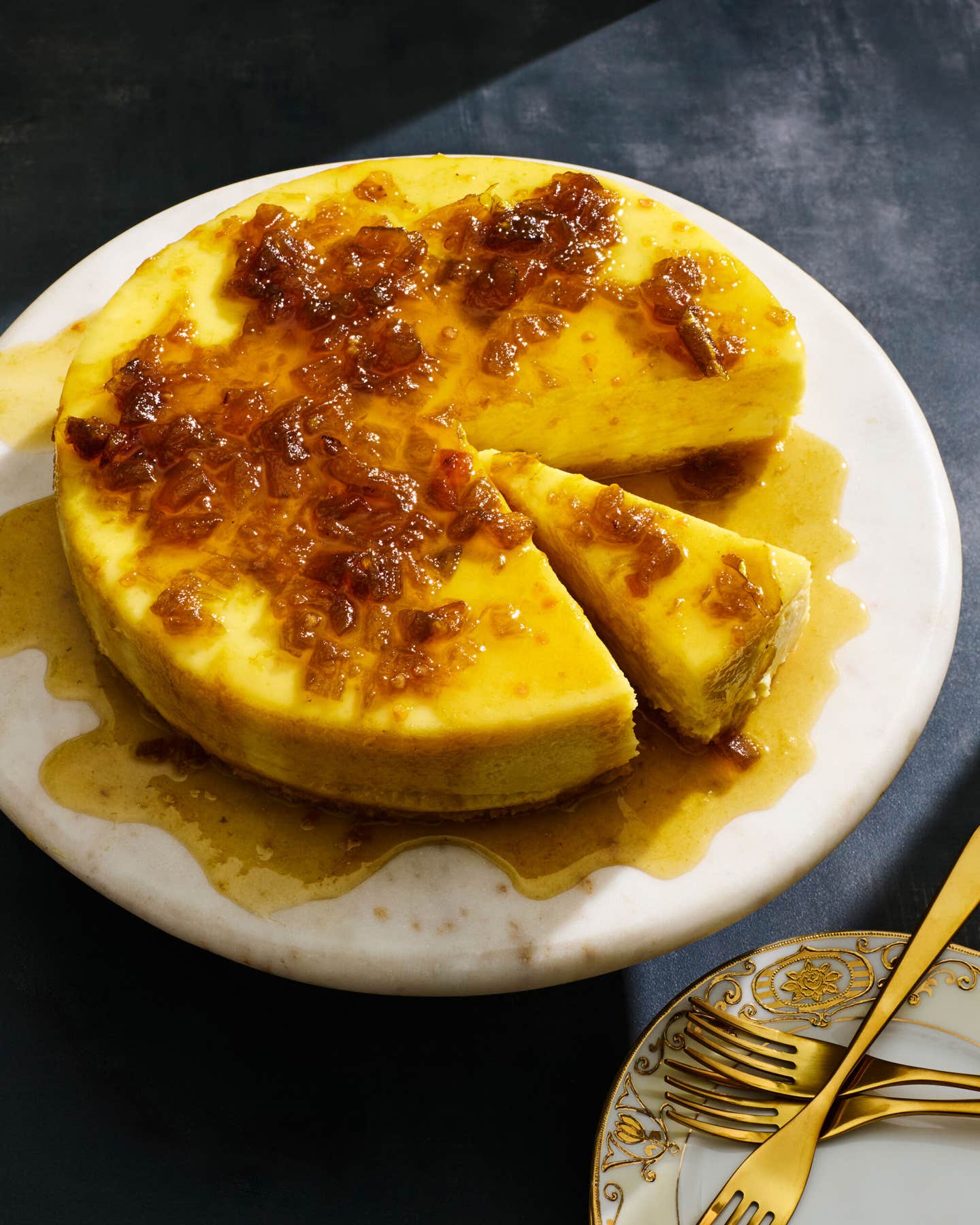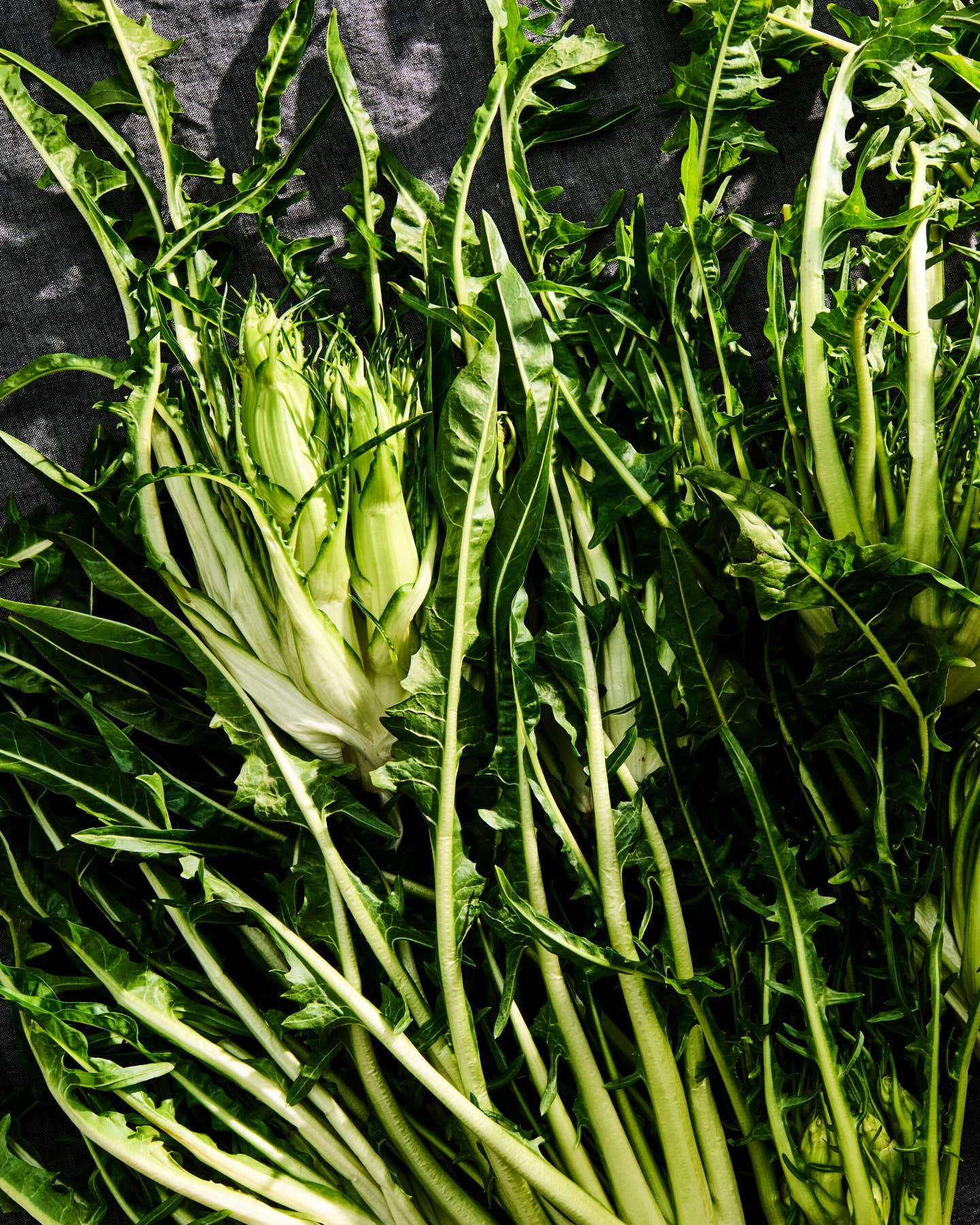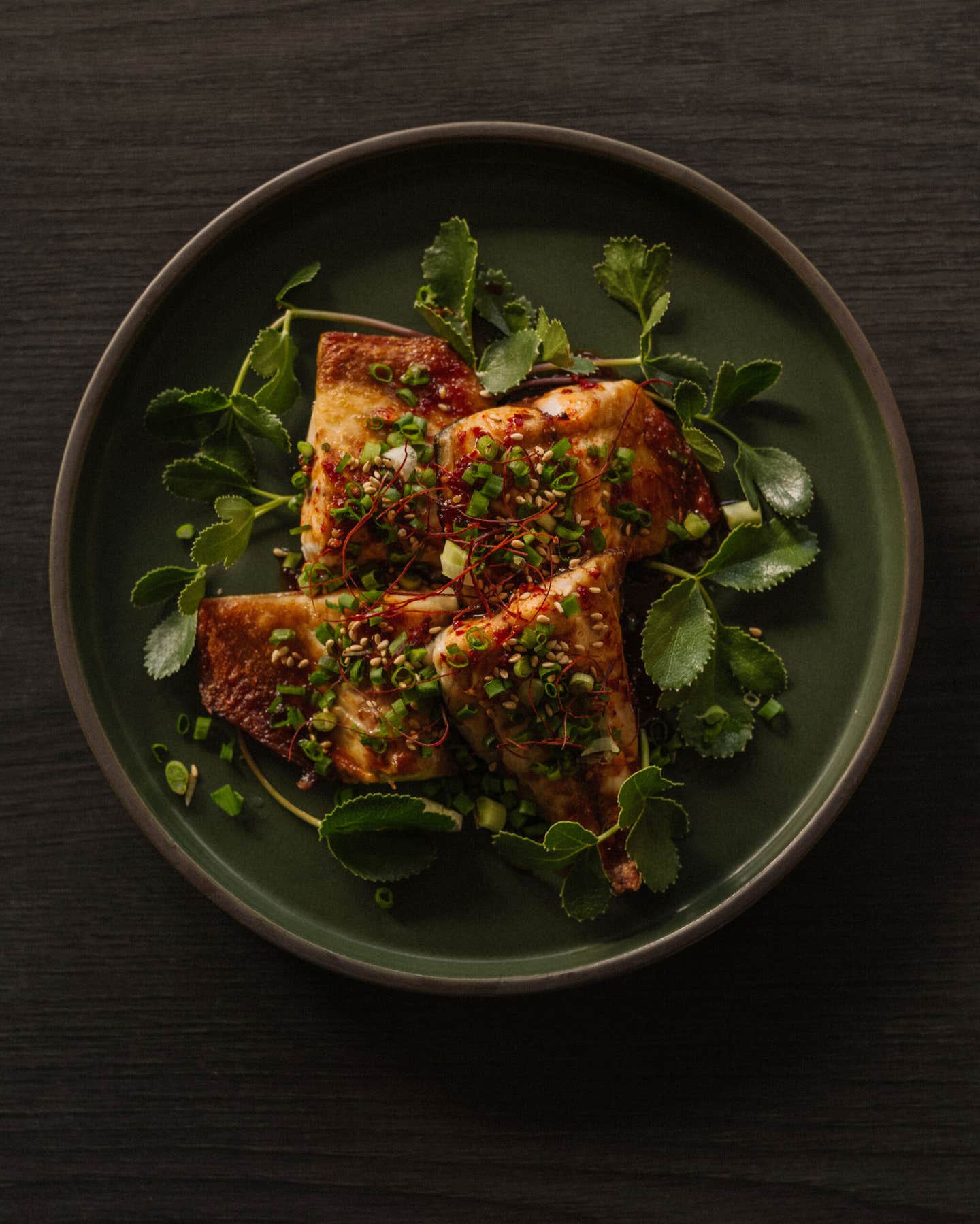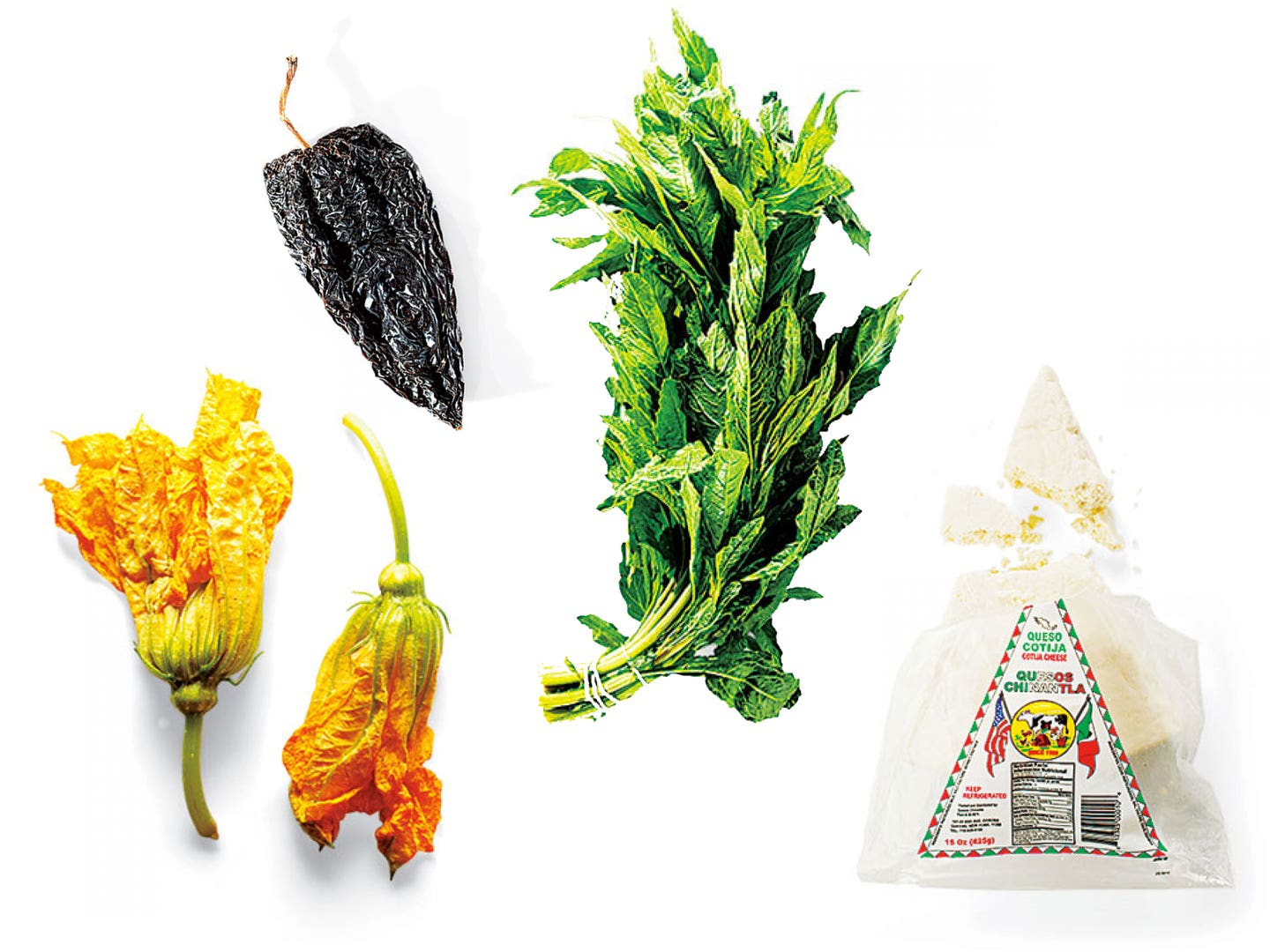
The Mexican Pantry
As we visited markets and kitchens across Mexico while putting together our Mexico Issue, we received an invaluable education in the ingredients and equipment that give Mexican cooking its singular intensity and depth of flavor. When we began to test recipes back in the SAVEUR kitchen, we found that all these workhorses of the Mexican kitchen are readily available in the United States, at Latin American markets and through mail order. Get to know these basic elements, and you'll be well on your way to grasping the art and ingenuity behind one of the world's great cuisines.
Dried Mexican Oregano
Dried Mexican oregano is usually sold with some edible stems included. It’s an entirely different plant from Mediterranean oregano, with a brasher, earthier flavor suited to sauces and stews like beef-and-guajillo caldo de res. Available at ranchogordo.com
Queso Oaxaca
We love queso Oaxaca, a mild, stringy cheese that’s sold, like fresh mozzarella, in balls, as well as in ropey braids. It melts beautifully and brings rich, creamy flavor to dishes like molletes, bean-and-cheese sandwiches. Available at mexgrocer.com
Fideos
The thin wheat-flour noodles called fideos came to Mexico with the Spanish. They’re typically sold dried in bundles and broken into smaller pieces to use in casseroles or in soups like sopa de fideo. Available at mexgrocer.com
El Yucateco Achiote Seasoning
El Yucateco achiote seasoning is a ready-made recado rojo, the red spice paste from the Yucatan. Made with garlic, achiote, and vinegar, it gives bright flavor and color to pollo pibil (Yucatan-style chicken with achiote). Available at mexgrocer.com
Squash Blossoms
Squash blossoms can be stuffed with cheese and fried, stirred into soups like caldo Xochitl con flor de calabaza (squash blossom soup), or used to fill tacos or quesadillas. Find them in farmers’ markets, or online year-round. Available at melissas.com
Ancho Chiles
Ancho chiles–poblanos in their dried form–bring fruity and slightly acidic notes to sauces such as mole poblano. Look for ones that are pliant–if they’re brittle, they’re old and likely diminished in flavor. Available at marxfoods.com
Canela
The spice classified as true cinnamon, or canela in Spanish, is softer in character than the cassia often labeled cinnamon in the U.S. It sings in everything from stews to sweets. Once ground it loses flavor fast, so buy it whole and grind as needed. Available at ranchogordo.com
Crema
Crema is a mild-tasting cultured cream used to enrich soups and sauces and to garnish any number of dishes. You can also substitute creme fraiche or sour cream, thinned with a little milk or heavy cream, to get the right consistency for drizzling. Available at mexgrocer.com
Cotija
Cotija, a hard, aged cows’ milk cheese, has a salty flavor reminiscent of feta’s. It’s grated and sprinkled over countless savory dishes as a garnish. In some places it is labeled as queso añejo (“aged cheese”) or queso seco (“dry cheese”). Available at mexgrocer.com
Epazote
Epazote grows as a weed in much of the U.S., but in Mexico it’s an herb prized for its bold, citrusy, slightly resinous flavor. Cooks add a sprig to black bean dishes like frijol con puerco, for a note of bright pungency. Available at melissas.com
Tomatillos
Tomatillos, encased in papery husks, bring tart, fruity flavor to salsa verde and the sauce for enchiladas suizas. Smaller ones, about the size of a walnut in the shell, have more concentrated flavor. Available at melissas.com
Pepitas
Nutritious, oil-rich pepitas are the seeds of pumpkinlike calabaza squash. Lightly pan-toast the seeds to bring out their nutty flavor. These enrich the sauce for pollo en pipian verde (chicken with pumpkin seed-tomatillo sauce). Available at mexgrocer.com
Pasilla Chiles
Pasilla chiles have a rich flavor and midrange heat that make them a versatile ingredient in everything from cooked sauces like mole poblano to table salsas. The seeds can also be toasted to make a flavorful garnish. Available at marxfood.com
Flor de Jamaica
The hibiscus flower–flor de jamaica in Spanish–thrives in subtropical Mexico. Its dried blooms, sold in bulk, can be steeped in sweetened water to make a tart, bright red syrup used in the drink agua de jamaica. Available at mountainroseherbs.com
Queso Fresco
Queso fresco is a pleasantly acidic fresh cows’ milk cheese. Sometimes sold wrapped in banana leaves, it’s used for stuffing tortas (sandwiches) and enchiladas, and for crumbling over dishes like chalupas poblanas. Available at mexgrocer.com
Chile de Arbol
Slender and brick red when dried, the chile de arbol is one of the hotter peppers used in Mexican cooking. It has a strong, sharp flavor that intensifies with toasting, lending complexity as well as heat to many different kinds of salsa. Available at marxfoods.com
Cazuelas
Flat-bottomed cazuelas are the ultimate stove-to-table cookware. The pots, ceramic with a glazed interior, are used to make rice and sauces such as mole poblano. Opt for quality: Cheaper ones may be painted with lead-based glazes. Available at mexgrocer.com
Molcajete
If you’ve had guacamole made tableside, you’ve seen a molcajete in action. This heavy, three-legged mortar-and-pestle, often made of volcanic rock, has been used for centuries to grind whole spices and herbs, to make salsas, and, yes, to pulverize avocados. Available at mexgrocer.com
Chipotle Chiles
Smoke-dried jalapeños, called chipotle chiles, come in a two types: Chile meco (pictured) is large and tobacco brown; chile mora is smaller and red-brown. The latter is less sweet and more astringent, but either will add a round, smoky flavor to dishes. Available at melissas.com
Camaron Seco
Camaron seco, cooked, salted, and partially or fully dried shrimp, bring funky, umami notes to foods like salsa con camaron seco. They can be used with heads intact, but be sure to first remove the bitter-tasting eyes. Available at melissas.com
Masa Harina
Masa harina is a flour made from corn that’s been soaked in slaked lime to soften and then dried before grinding. The type for making tortillas is finely ground; a coarser version for making tamales is usually labeled as such. Available at mexgrocer.com
Piloncillo
To make piloncillo, juice extracted from sugar cane is boiled and reduced, then poured into molds to harden. The resulting unrefined brown sugar has a rich, complex sweetness that enhances desserts as well as savory dishes. Available at mexgrocer.com
Tortilla Press
Though some cooks are skilled enough to shape tortillas by hand, a tortilla press is the best means for getting thin, consistent results. Purchase a sturdy wood or iron model; when closed, no light should be visible between the two plates. Available at mexicanimports.com
Nopales
Nopales, spiny paddles of the prickly pear cactus used in soups, salads, salsas, and pickles, have a vegetal flavor with a pleasant bitter edge. To strip them of thorns, grip them by the base and scrape off the thorns with a knife held flush against the paddle. Available at melissas.com
Manteca Pura
Manteca pura, or rendered pork lard, is used in all kinds of Mexican dishes, from tamales to refried beans. Unlike the snow-white lard sold in the U.S., it’s rendered by cooking, which gives it a caramel color, creamy texture, and meaty flavor. Available at emperorfood.com
Guajillo Chiles
Guajillo chiles bring brightness and tartness to rubs, stews, and sauces, like the one used to dip the potato-chorizo sandwiches called pambazos. Look for guajillos of even color that are not too brittle. Available at marxfoods.com
Molinillo
The molinillo is an intricately carved wooden whisk used for mixing and frothing beverages such as hot chocolate. To use, submerge the tool in the liquid while rolling the handle between the palms of your hands. Available at deandeluca.com
Comal
The comal, a griddle, is used to cook tortillas, toast dried chiles, and char fresh aromatics. Earthenware comals are traditional, but they’re rarely found north of the border; iron versions, similar to French crepe pans, are more common Stateside. Available at mexgrocer.com
Olla
The olla, a tall clay pot, is an essential tool in Mexican kitchens. Glazed on the outside only, these porous cooking vessels add an earthy flavor to long simmered dishes like soups and stews and frijoles de olla (literally, “pot” beans). Available at bramcookware.com
Purslane
Purslane–verdolaga in Spanish–is prized in Mexico for its crisp texture and salty-tangy flavor. The succulent leaves and stems are eaten raw in salads, are added to stews and soups, and steamed and used in moles. Available at marxfoods.com
Valentina
A dash of Valentina, a tangy hot sauce from Guadalajera, Mexico, brings a rich, balanced spiciness to everything from tacos to ceviche. Available at mexgrocer.com
Huanzontle
Huanzontle, a wild, slightly bitter vegetable, is native to Mexico but also grows wild in much of the United States. Its seed heads–fibrous inedible stems covered with clusters of spiky, broccoli-like flower buds–are popular poached, battered, and fried. Available at marxfoods.com
Guajes
Guajes are large, flat pods that house fleshy, bean-like seeds. The seeds, which have a herbaceous, garlicky flavor, are incorporated fresh into guacamole, dried, toasted, and ground to make salsas and sauces, or simply toasted and salted to eat out of hand as cacalas. Available at marxfoods.com
Masa Harina
Masa harina for tamales has a coarser consistency than the kind used for making tortillas. Look for the label “masa para tamales,” which is just the lime-treated corn flour; anything labeled “masa prepared para tamales” also includes flavoring and lard. Available at mexgrocer.com
Chayote
The chayote, a relative of zucchini with crisp, juicy flesh and a delicate, potato-like flavor, is widely eaten in the Yucatan, where several varieties–both spiney and smooth-skinned–are stuffed, eaten raw in salads and slaws, added to salsas and soups, fried and simply boiled. Available at melissas.com
Quintonil
Quintonil, a term used to refer to several species of the amaranth family, are highly nutritious wild herbs with leafy greens, with a sweet, spinach-like flavor. The leaves and stems can be enjoyed raw, but they’re more commonly sauteed or added to soups and stews.
Chilacas
Chilacas are the fresh, immature chiles that, when ripe and dried , are known as pasilla chiles. These long, narrow, dark green chiles have a curved shape that have earned them the nickname cuernillos (“big horns”). Mildly spicy and fruity in flavor, they are commonly charred, peeled and seeded, and torn into narrow strips before being incorporated into a variety of dishes. Available at marxfoods.com
Manzano Chiles
Bulbous, fleshy, very hot manzano chiles thrive in the cool highlands of Central Mexico. Yellow or deep red when mature, with black seeds (unique among peppers), they’re almost always used fresh, to bring heat to dishes like pico de gallo de duranzo, a fiery peach salsa. Available at melissas.com
Chepiche
Native to Oaxaca, chepiche resembles tarragon with its long thin leaves, but tastes like a potent coriander. The fragrant herb has a strong clean flavor with notes of pine and citrus. Oaxacan home cooks cook it in sopa de guias, a squash vine soup; elsewhere, it’s more often eaten raw, as a filling for tacos. Available at marxfoods.com
Bokados Salsa Picante
Bokados salsa picante, made from chiles de arbol, is a salty, sour hot sauce popular in northern Mexico, where it’s used to bring heat to botanas (snacks) like burritos and quesadillas.
Hoja Santa
Hoja santa (“sacred leaf”) is a massive velvety, heart-shaped leaf with an intense anise aroma. Although dried leaves can be used as flavoring, fresh leaves are prized for their complex sassafras-like taste. The leaves make fragrant wrappers for steamed tamales and grilled fish, and are a cornerstone of green mole verdes. Available at marxfoods.com
Metate
The metate, an ancient tool for pulverizing ingredients, has a wide stone base and a rectangular grinding stone. Many cooks still use it to grind cacao, nuts, and seeds, or to pulverize corn to produce masa harina.
Calabacita
Zuchinni-like calabacita or tatuma squash has a creamy texture and light, sweet, buttery flavor. A versatile vegetable, they’re eaten raw, grilled, or sauteed, and are classically used in stews; they also make great additions to soups, side dishes, or salsas. Available at melissas.com
Mamey Fruit
Reminiscent of rich pumpkin, sweet mamey fruit popular in the Mexican popsicles called paletas. Their mahogany pits are also ground and used in moles or in the classic Oaxacan drink tejate. Available at melissas.com
Keep Reading
Continue to Next Story
